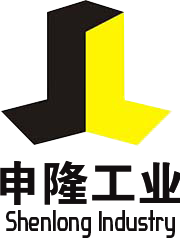Characteristic of V-Belt Wheel 3 Slot Without Bushing
A
V-belt wheel with 3 slots without a bushing is a power transmission component used to transmit power from a motor or engine to a driven component. Here are some characteristics of V-belt wheels with 3 slots without bushings:
Three slots: A V-belt wheel with 3 slots are designed to accommodate three V-belts, providing greater power transmission capacity than a 2-slot wheel.
No bushing: A V-belt wheel with 3 slots without a bushing is designed to fit directly onto a shaft without the need for a separate bushing component. This design simplifies installation and reduces the cost of the system.
Material: V-belt wheels with 3 slots without bushings are typically made of cast iron or steel, which are durable and can withstand high loads and speeds.
Load capacity: V-belt wheels with 3 slots without bushings are designed to handle high loads and transmit large amounts of power, making them ideal for heavy-duty industrial applications.
Speed: V-belt wheels with 3 slots without bushings can operate at high speeds without overheating or failing, provided that they are properly aligned and maintained.
Application: V-belt wheels with 3 slots without bushings are commonly used in a wide range of applications, including pumps, compressors, conveyors, and other types of industrial machinery.
When selecting a V-belt wheel with 3 slots without a bushing, it is important to ensure that the wheel is compatible with the shaft of the driving component and the V-belts that will be used in the system. Proper alignment is also crucial for efficient power transmission and to prevent premature wear and failure of the V-belts and other components in the system.
How to choose V-Belt Wheel 3 Slot Without Bushing
When choosing a
V-belt wheel with 3 slots without a bushing, there are several factors to consider to ensure proper selection and reliable operation of the power transmission system. Here are some important factors to consider:
Shaft size: The V-belt wheel must match the size and shape of the shaft of the driving component. It is important to select a V-belt wheel with the correct bore size and keyway dimensions to ensure a secure fit to the shaft.
Belt size: The V-belt wheel must be compatible with the size and pitch of the V-belts that will be used in the system. It is important to select a V-belt wheel that matches the dimensions of the V-belts to ensure efficient power transmission and prevent premature wear and failure of the belts and other components in the system.
Load capacity: The V-belt wheel must be capable of handling the load and power requirements of the system. It is important to select a V-belt wheel with a load capacity that matches or exceeds the requirements of the application.
Speed: The V-belt wheel must be designed to operate at the speed required by the system without overheating or failing. It is important to select a V-belt wheel that is rated for the speed of the system.
Material: The V-belt wheel should be made of durable material, such as cast iron or steel, that can withstand high loads and speeds.
Alignment: Proper alignment of the V-belt wheel is crucial for efficient power transmission and to prevent premature wear and failure of the V-belts and other components in the system. It is important to ensure that the V-belt wheel is properly aligned with the driving and driven components.
Overall, selecting the right V-belt wheel with 3 slots without a bushing requires careful consideration of the application requirements and a thorough understanding of the system's design and operation. Consulting with a knowledgeable supplier or engineer can help ensure proper selection and reliable operation of the power transmission system.


 CN
CN EN
EN







